A journey into the biblical significance of the Sheep Gate, revealing ancient rituals and spiritual symbolism that beckons deeper exploration.
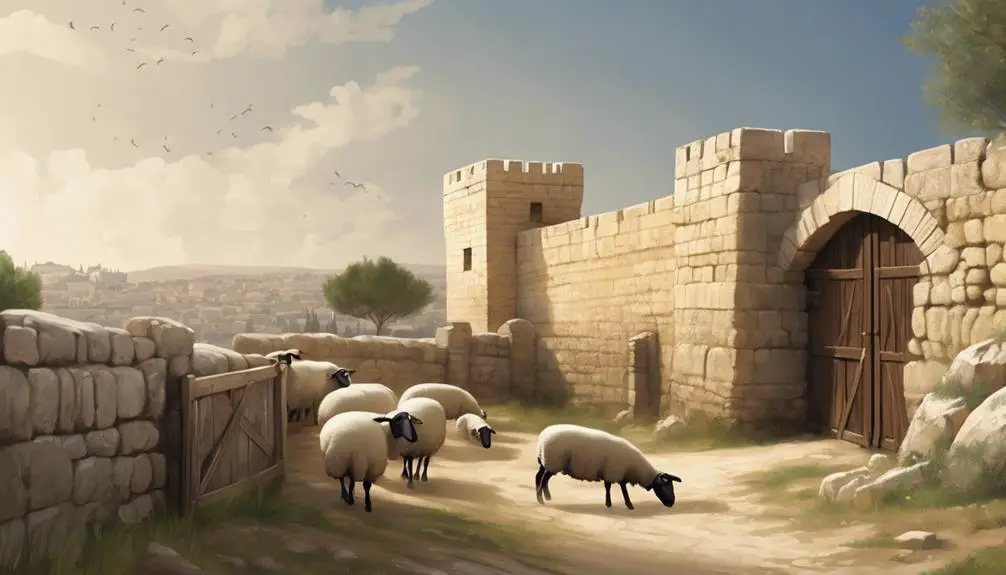
What Is a Sheep Gate in the Bible
Imagine you're walking through a bustling marketplace in ancient Jerusalem, and you come across a path leading to the Sheep Gate.
You've heard that this gate holds more than just a passageway for livestock; it's steeped in history and symbolism. The Sheep Gate, mentioned in the Bible, serves as a fascinating entryway into understanding the deep connections between the physical and spiritual realms of the time.
As you stand at its threshold, you can't help but wonder about its role in ancient sacrifices and what it signifies in a broader religious context. Let's explore this further, shall we?
Key Takeaways
- The Sheep Gate was a crucial entry into Jerusalem, connecting daily and spiritual life through the passage of sacrificial animals.
- It symbolizes spiritual renewal, purity, and the transition from profane to sacred, reflecting its importance in Jewish rituals.
- Rebuilt by Nehemiah, the gate is linked to temple practices, especially for inspecting animals for sacrifice, highlighting its religious significance.
- Archaeological discoveries in Jerusalem have confirmed the Sheep Gate's existence, offering insights into its historical and biblical context.
Historical Background
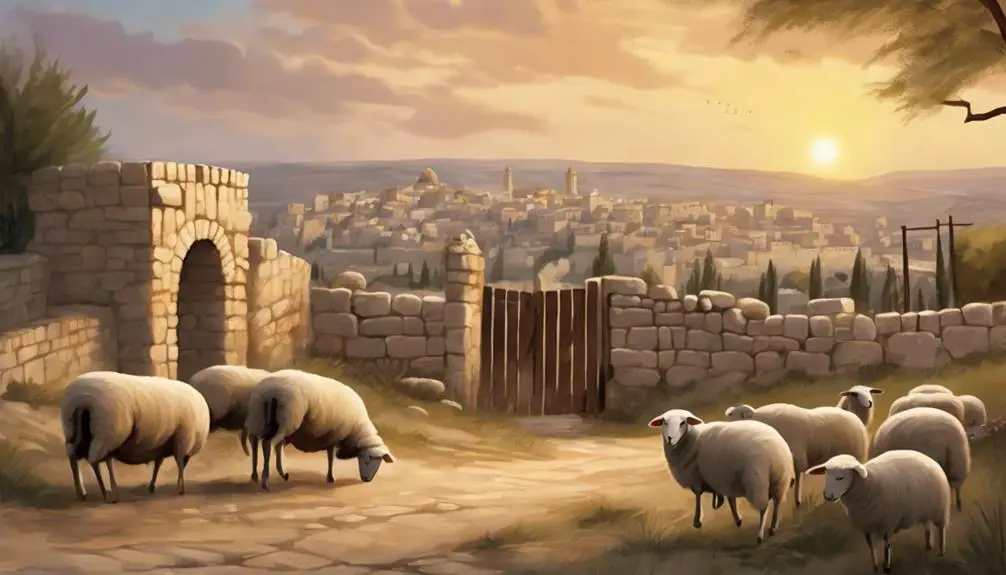
The Sheep Gate, mentioned several times in biblical texts, holds significant historical relevance as it served as a crucial entry point into Jerusalem, particularly for those involved in ancient sacrificial practices. Its existence is deeply intertwined with the city's religious and economic life, highlighting its importance beyond a mere architectural feature.
As you delve into its historical background, you'll understand that its ancient construction wasn't only a testament to the engineering skills of the time but also a reflection of the socio-economic dynamics shaped by trade routes.
These trade routes, vital for the sustenance of Jerusalem, facilitated the movement of goods, livestock, and people. The Sheep Gate's location and function were strategic, serving as a conduit for sheep and other animals destined for temple sacrifices. This ancient construction, therefore, was more than a physical gateway; it was a linchpin in the city's religious rites and economic activities.
Its role in ancient sacrificial practices underscores the intertwined nature of religion and trade, where spiritual obligations spurred economic exchanges along these routes. The Sheep Gate's historical backdrop offers a fascinating glimpse into how ancient construction and trade routes collectively shaped the cultural and economic landscape of Jerusalem.
Location and Description
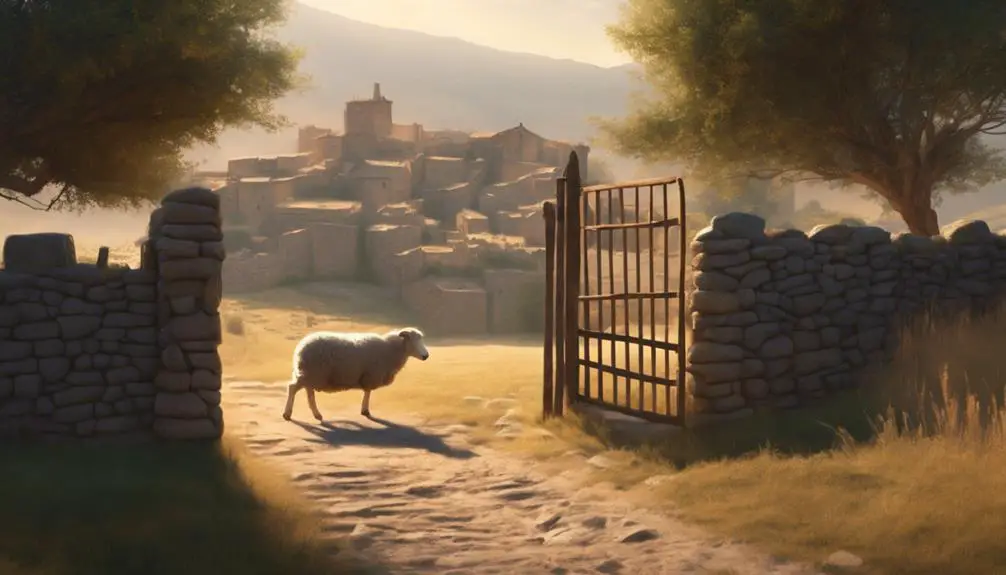
Nestled near the northeastern part of Jerusalem's ancient walls, you'll find the Sheep Gate, a site that has often served as a pivotal entrance for both the city's inhabitants and their livestock. This gate, steeped in historical significance, is more than just a passageway; it's a testament to ancient engineering and cultural relevance. When examining the Sheep Gate, several key aspects stand out:
- Gate Dimensions: The Sheep Gate, while not the largest, was meticulously designed to accommodate the flow of animals and people. Its dimensions were crafted to ensure ease of movement, balancing security with accessibility.
- Construction Materials: The materials used in constructing the Sheep Gate were primarily limestone and cedar, chosen for their durability and availability. This choice reflects a blend of practicality and aesthetic value, contributing to the gate's resilience and appearance through centuries.
- Architectural Style: The gate's design indicates a blend of utility and symbolism. Its architecture, while serving a functional purpose, also reflects the craftsmanship and cultural priorities of the time.
Understanding the Sheep Gate's location, dimensions, and construction materials offers insight into its role and significance within ancient Jerusalem, highlighting its importance beyond mere functionality.
Symbolic Meanings
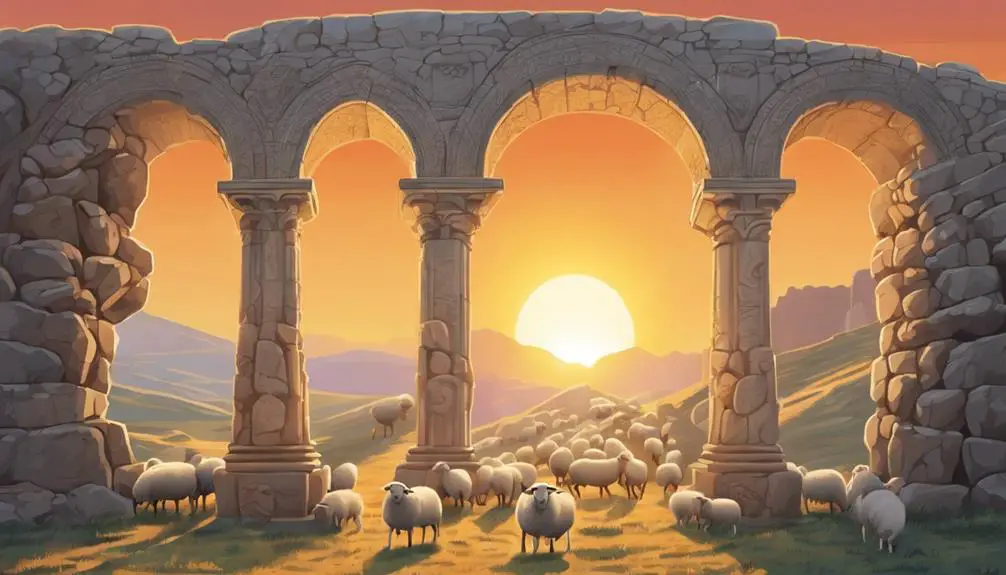
Exploring beyond its architectural elegance, you'll find that the Sheep Gate holds deep symbolic meanings within the tapestry of biblical narratives. This gate isn't just a physical passageway; it's imbued with layers of spiritual entry and pastoral imagery, offering a rich field for analysis.
Symbolic Element |
Meaning |
|---|---|
Spiritual Entry |
Represents the pathway to spiritual renewal and purity, guiding believers towards a sanctified life. |
Pastoral Imagery |
Evokes the care and guidance of a shepherd, symbolizing protection and guidance by divine forces. |
Water Nearby |
Suggests purification and cleansing, essential for spiritual rebirth and preparation. |
Position in Jerusalem |
Signifies an entry point not just into the city but into a space of religious significance and community. |
Proximity to the Temple |
Highlights the connection between daily life and spiritual worship, emphasizing the journey towards holiness. |
Through its symbolic representation, the Sheep Gate serves as a metaphor for the journey of faith, illustrating how one must pass through stages of spiritual cleansing and guidance to reach a state of holiness. It's a profound reminder of the pastoral care inherent in spiritual leadership, underscoring the importance of following a path laid out by higher powers.
Connection to Sacrifices
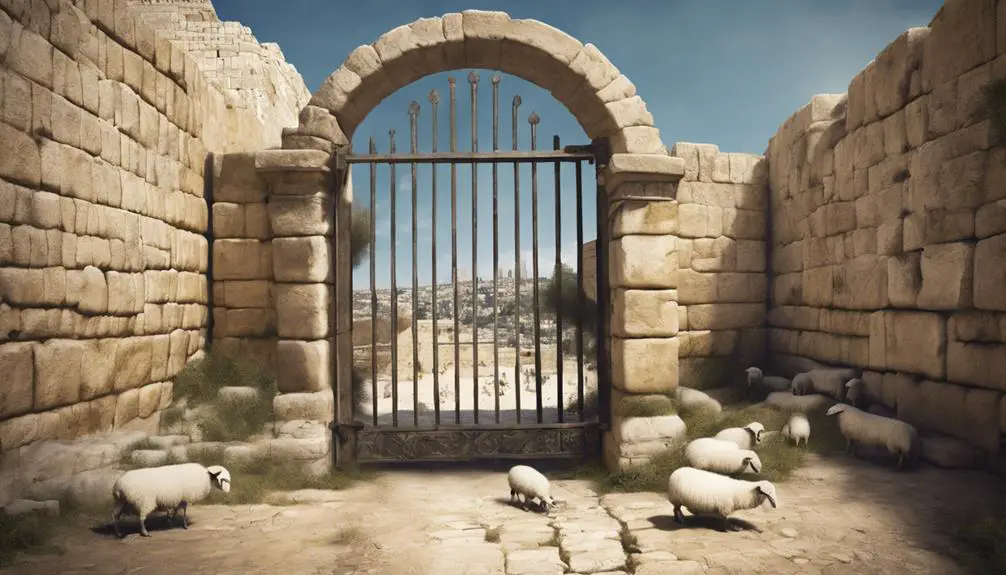
Delving into the Sheep Gate's significance, one can't overlook its integral role in ancient sacrificial practices. This gateway wasn't just a physical entry; it was a conduit through which the very essence of ritual purity and adherence to divine commandments were maintained. Here's how:
- Pathway for Sacrificial Animals: The Sheep Gate served as the primary entry for animals destined for sacrifice. This wasn't merely a matter of convenience but a critical aspect of maintaining ritual purity. Animals brought through this gate were deemed pure and fit for offerings, ensuring that the spiritual integrity of the sacrifices was unblemished.
- Preparation for Festival Observances: Festival observances in ancient times were deeply intertwined with sacrificial rites. The Sheep Gate facilitated the seamless flow of animals, particularly during peak festival times, ensuring that the community could fulfill its religious obligations without hindrance.
- Symbolic Threshold: Crossing through the Sheep Gate with an animal marked a transition from the profane to the sacred, a physical manifestation of spiritual preparation. This act was a tangible expression of faith and devotion, underscoring the community's commitment to upholding the tenets of their faith through sacrifice.
The Sheep Gate, therefore, wasn't just an architectural feature but a pivotal element in the spiritual and communal life of ancient peoples, embodying their quest for purity and divine approval.
The Sheep Gate Today
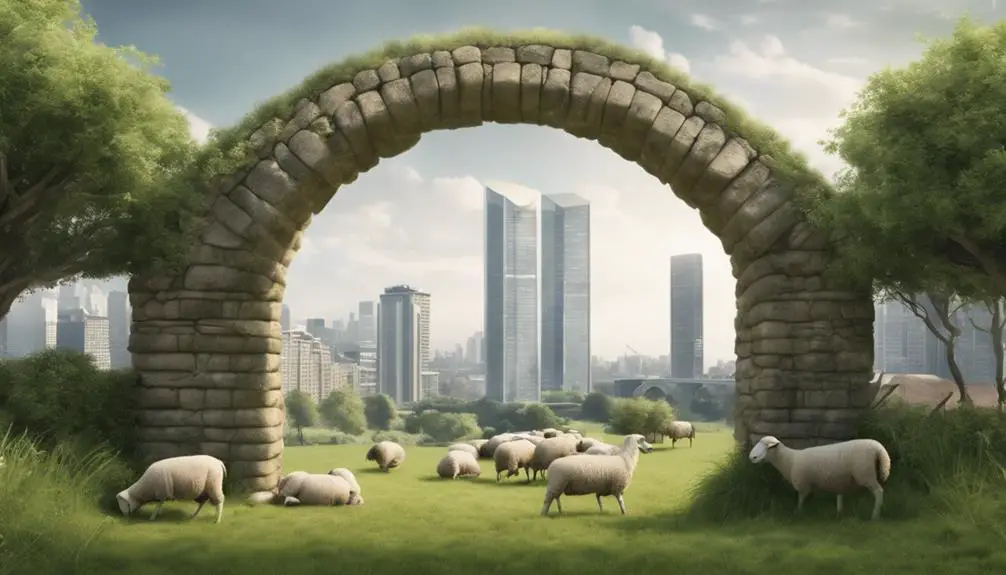
Today, the Sheep Gate stands as a testament to the intertwining of ancient religious practices and modern historical inquiry, inviting scholars and visitors alike to ponder its enduring legacy. Modern renovations have been carefully implemented to preserve its historical integrity while making it accessible to a broader audience. The impact of tourism on the site is a topic of scholarly debate, balancing the benefits of increased awareness and appreciation against the risks of damage and commercialization.
Aspect |
Description |
Impact |
|---|---|---|
Modern Renovations |
Careful restoration to maintain historical accuracy. |
Preserves integrity for study. |
Accessibility |
Enhancements for visitor access without compromising the site. |
Broadens educational outreach. |
Tourism Impact |
Increased visitor traffic brings awareness and funding. |
Potential risk to preservation. |
Scholarly Interest |
Attracts research on its historical and religious significance. |
Deepens understanding of history. |
Conservation Concerns |
Measures to protect against wear and commercial exploitation. |
Ensures long-term preservation. |
These developments underscore the delicate balance between preserving the Sheep Gate's historical essence and adapting to modern demands. As you consider its place in today's world, it's clear that the Sheep Gate is more than a relic; it's a living bridge between past and present, challenging us to respect and learn from our collective history.
Frequently Asked Questions
How Does the Concept of the Sheep Gate Relate to Modern Christian Practices and Beliefs?
In modern Christian practices and beliefs, the concept of the Sheep Gate translates into the embodiment of shepherd leadership and gate symbolism.
As you explore your faith, you'll find that leaders often adopt the role of shepherds, guiding their flock with care and wisdom.
Meanwhile, the gate serves as a metaphor for Christ's protection and the pathway to spiritual safety.
These elements deeply resonate, influencing how you live out and interpret your faith today.
Are There Any Specific Prayers or Rituals in Christianity That Specifically Reference the Sheep Gate?
In Christianity, you won't find specific prayers or rituals that directly reference the Sheep Gate. This is especially true when considering its biblical context and symbolic meanings related to sheep farming and gate design.
This absence highlights a broader perspective on spiritual symbolism rather than direct liturgical application. The focus within modern practices leans more towards the figurative representation of Jesus as the shepherd, rather than specific architectural elements like gates.
How Have Different Christian Denominations Interpreted the Significance of the Sheep Gate Differently?
Different Christian denominations interpret the significance of the Sheep Gate with varied emphasis on gate symbolism.
You'll find that some view it as a representation of Jesus as the 'gate' for his followers, aligning with John 10:7-9's teachings.
Others might focus on historical or eschatological interpretations, reflecting on how the gate signifies entry into a sacred or purified state.
These denominational perspectives enrich the understanding, highlighting diverse theological insights and interpretations.
Can the Principles Associated With the Sheep Gate Be Applied to Contemporary Issues of Social Justice and Community Service Within the Christian Faith?
You can indeed apply principles linked to the Sheep Gate to modern challenges in social justice and community service.
By embracing social entrepreneurship, you're taking proactive steps toward creating sustainable change.
Compassionate leadership, inspired by these foundational values, drives efforts to address disparities and foster inclusiveness.
This approach not only aligns with Christian faith but also sets a powerful example of how ancient wisdom can inform and guide contemporary actions.
Has the Sheep Gate Been Depicted in Christian Art or Literature Outside the Bible, and if So, How Has Its Representation Varied Across Different Cultures and Historical Periods?
You're exploring how the Sheep Gate's depiction in Christian art and literature extends beyond the Bible, focusing on its artistic symbolism and cultural interpretations.
This inquiry reveals that its representation indeed varies significantly across different cultures and historical periods, reflecting diverse theological and societal values.
Conclusion
In conclusion, your exploration of the Sheep Gate, from its historical roots to its symbolic intricacies, underscores its multifaceted significance within biblical narrative and Jewish heritage.
Its location and architectural details offer insights into ancient sacrificial practices, highlighting a profound connection between physical spaces and spiritual meanings.
Today, the Sheep Gate stands as a testament to these rich layers of symbolism, inviting you to delve deeper into its historical and theological dimensions, enriching your understanding of biblical texts and traditions.

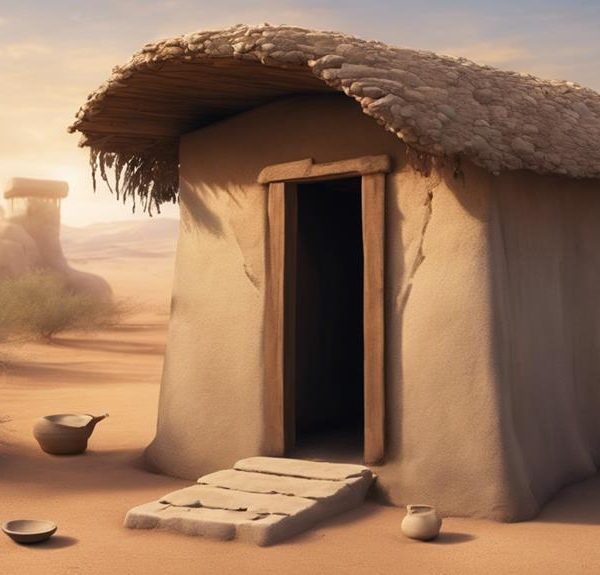
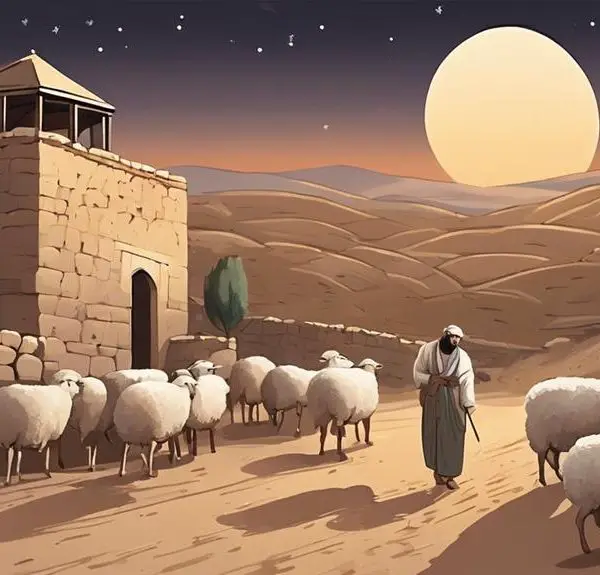
Sign up